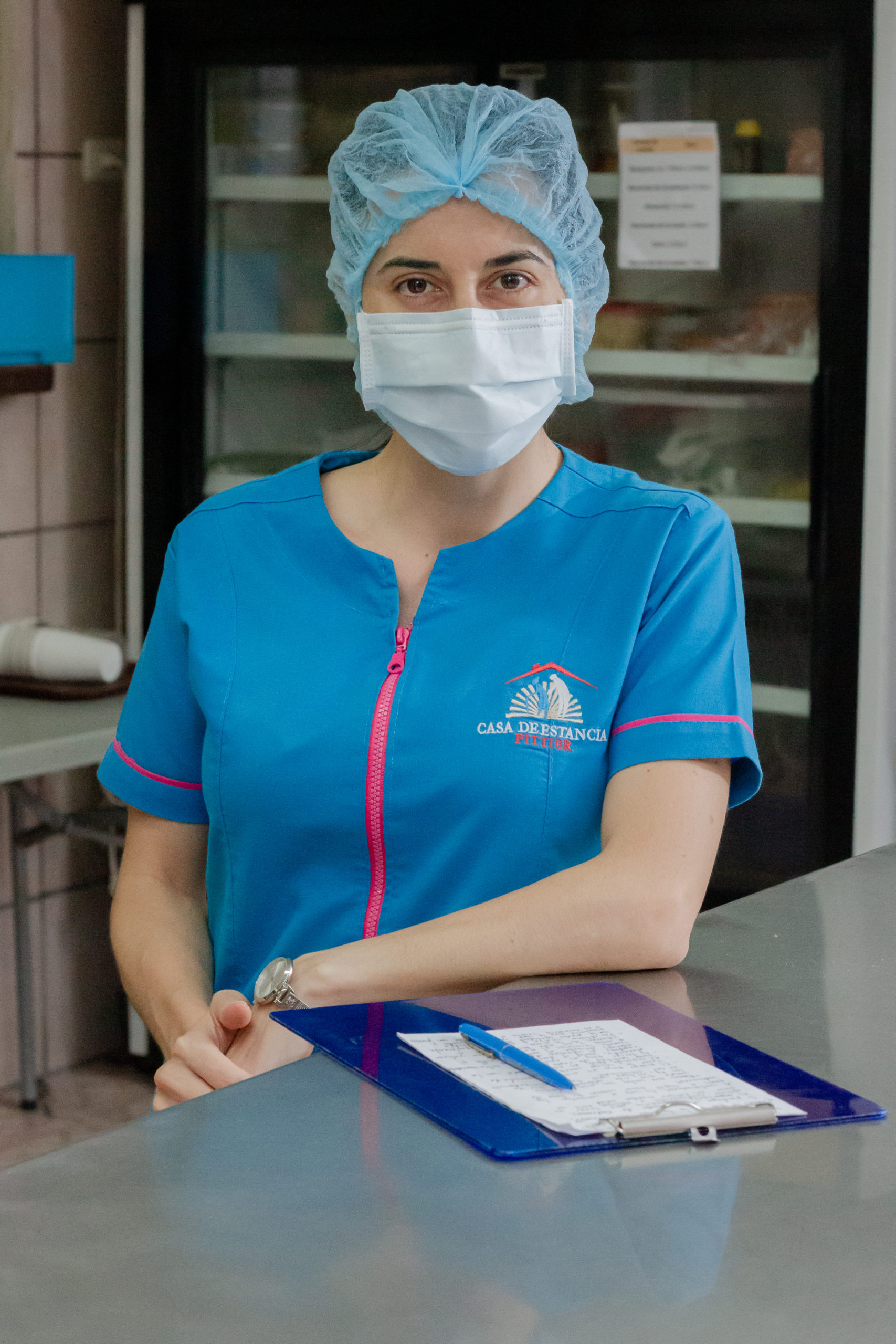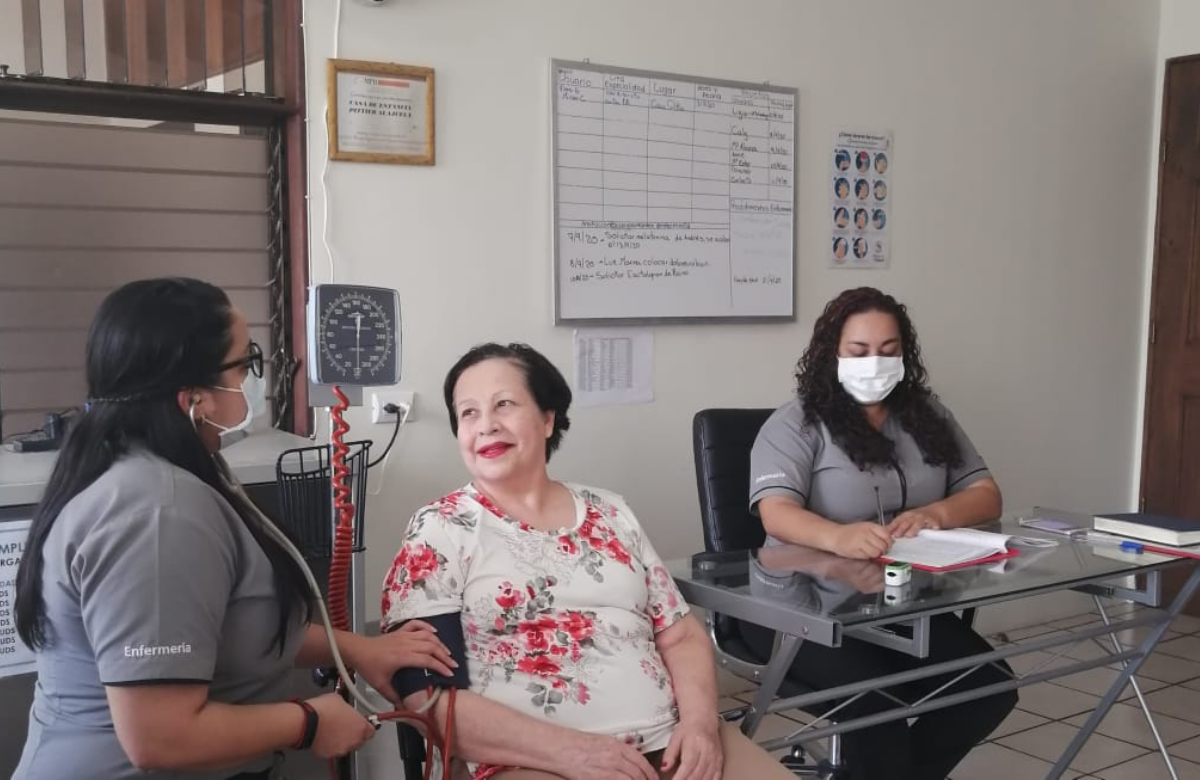As nutritionist at Casa Estancia de Pittier, I am in charge of two jobs. On the one hand, I perform the nutritional assessment of each senior citizen who enters, as well as the follow-up of their evolution. On the other hand, I manage the Food Service.
Patients admitted to Casa Estancia usually have some type of dementia, associated with other pathologies such as: hypertension, diabetes, dyslipidemia, chronic kidney disease, liver disease, Chronic Obstructive Pulmonary Disease (COPD), so nutritional management is essential.
When a patient is admitted, the nutritional assessment is extremely important, since the patient's diagnosis is made and from there, the objectives and needs for treatment are established.
It is worth mentioning that a high percentage of patients admitted to Casa Estancia come with some degree of malnutrition or risk of malnutrition, so our main concern is that the patient eats and improves their nutritional status.
For this reason, anthropometric measurements are taken every month and the impact of the treatment is measured.
I usually coordinate with nurses, doctors, assistants and cooks so that, once the nutritional treatment is established, the special indications of each patient are followed.
I also have close communication with the physiotherapist, who evaluates the patients and gives me the approval to weigh them, since sometimes patients come with their muscle mass depleted, so it is not convenient to put them on their feet without first receiving therapy, or they come from hip surgery and require rest and a rehabilitation process to weigh them on the scale.

Good nutrition is essential for the elderly.
Patients with dementia
It is frequent that problems of deglutition occur. When this happens, it is necessary to modify the texture of food, to decrease the risk of bronchoaspiration, as well as giving comfort to the patient, so that he/she feels safe when eating..
Some patients cannot swallow liquids so they should be given liquids of different texture, depending on the progression of the disease.
Some tolerate nectar, honey or pudding type liquids.
However, the important thing is to detect these types of changes in the patient in time, in order to be able to adapt to the diet.
Another important aspect has to do with mealtime.
It turns out that, many times, we believe that patients don't want to eat because they put their plate away.
However, due to their pathologies, it is common for these patients to forget that they are eating, or they begin to have difficulty in their gross motor skills to bring the spoon to their mouth, so they must be assisted at feeding time, otherwise they may begin to lose weight.
Communication between all parties involved in the care of the older adult is very important.
The assistants who are in charge of providing food to the users are a key element when it comes to communicating the changes observed in a patient.
For example, sometimes a patient does not want to eat, and it turns out that it is because he has a toothache.
Other times they have problems with their dentures, are starting an infectious process or are depressed.
Team work
A very important aspect is teamwork, especially with the nursing department, since we must ensure that patients keep their glycemia and blood pressure under control..
At the same time, it is ideal to decrease the frequency of occurrence of urinary and respiratory tract infections.
We also work on reducing the appearance of pressure ulcers, in the event that a patient is admitted with one, we work on healing it as soon as possible..
The nursing and nutrition department should be in constant communication with the attending physician and assistants.
Throughout the time I have been working at Casa Estancia de Pittier, I have realized that it is very important to know each patient, their tastes, preferences, habits and to please them.
Some patients have their preferred breakfast and this cannot be varied. Other users do not like fish and this is respected. On the day that fish is available, another meal is prepared for them.
In general, to increase appetite and encourage patients to eat their food, we must make sure to serve them what they like, just as if they were at home..

Food service
So, this leads me to talk about the other part of my job at Casa Estancia, which is running the Food Service.
Specifically, I draw up the menu cycle and place the orders with the various suppliers.
The menu cycle of a senior center should be nutritious, varied and balanced.
Also, because of the type of patients we have, it should be a menu where most of the preparations are soft and wet, that is, that there is usually a sauce or broth so that it is not a very dry meal, which makes it difficult for them to consume it..
There can be no large pieces or bones.
Apart from the normal menu, a mashed diet and liquidized diet should be made for patients who have swallowing problems or who are edentulous..
We also have patients who, due to their pathologies, can no longer consume food orally, so their feeding is managed:
- Via Nasogastric Tube (NGTS).
- Percutaneous Endoscopic Gastrostomy (PEG).
According to medical indication, therefore, nutritious artisanal liquids are also made to pass through SNG or PEG.
For me there is no greater satisfaction than for a Casa Estancia patient to tell me that the food was delicious, that he enjoyed it very much.
For me, this is the most important thing of all, to see how nutrition directly impacts the well-being of older adults..
Para mí, esto es lo más importante de todo, ver como la nutrición incide directamente en el bienestar de los adultos mayores.
I feel fortunate to dedicate an important part of my work to this population group.
Dr. Maria Fernanda Zumbado Murillo. Nutritionist, cód.815-11

